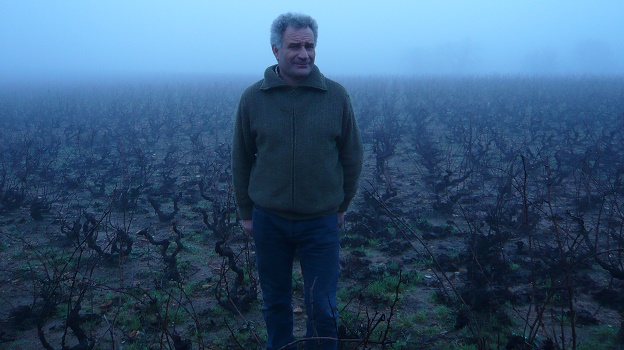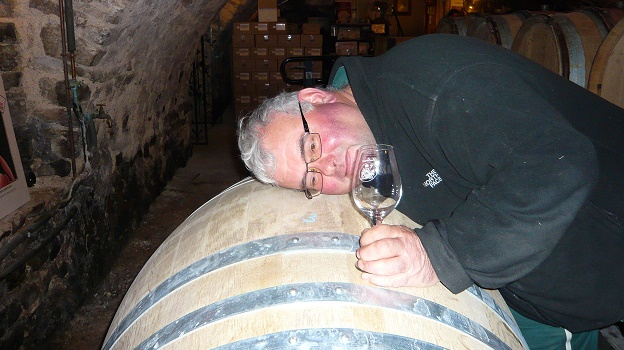Browse using the new Vinous website now. Launch →
Printed by, and for the sole use of . All rights reserved © 2015 Vinous Media
Current Beaujolais Releases
The hot streak of very good to excellent vintages that Beaujolais enjoyed from 2009 through 2011 took a breather with the lighter, sometimes lean and herbal 2012s, then picked up again with the often outstanding, fruit-driven 2013s. Unfortunately for long-time fans of these wines, the international market has copped to their little insider secret, and demand has never been as strong for the best wines and producers as it is today.
Value Still Abounds - Even With Rising Prices
Even with the recent uptick in prices, most Beaujolais bottlings still deliver exceptional bang for the buck, especially if one explores less-celebrated producers whose wines approach and often match the quality of those from the best-known estates. Beaujolais does have its share of blue chip domains, the demand for whose wines far outstrips supply; believe it or not, there’s an active grey market for some of these bottles similar to that for small-production Burgundies. While prices haven’t approached the same nosebleed levels, I am seeing more and more high-end Beaujolais popping up outside the authorized distribution network. For example, one of the region's most famous producers, Yvon Métras, doesn't even have an American importer, but that hasn't stopped industrious U.S. retailers and sommeliers from sourcing the wines in Europe, often paying full retail if necessary, to be able to offer them to their customers.
The view from Château Thivin
The 2012 and 2013 Growing Seasons
The 2012 vintage, while undoubtedly one to approach with some caution, was by no means a complete disaster as numerous fresh, energetic, site-typical wines were produced, mostly by the top producers, naturally. Mother Nature came down hard on the region early on, with severe frost damage in February; hail in April and again in August exacerbated the crop losses. In addition, frequent rainfall and cool weather throughout the season stymied fruit development, with the net result being a crop that was off by roughly half for the region as a whole.
The lack of real ripeness in the majority of vineyards means that many wines show an herbal character, often with screechy acidity and a lack of texture, not to mention short finishes. Severe selection in the vineyards and the cellars helped the most quality-obsessed producers make good and sometimes very good wines, but in general this is a vintage to approach carefully. Fans of the racy, nervy school of Beaujolais will find plenty of 2012s to enjoy but I would urge even these drinkers to consume the wines on the relatively young side, before the vintage's shortcomings prove impossible to ignore.
In contrast, the 2013 growing season, which endured a cool, rainy spring and early summer, benefited from dry, warm conditions from mid-July on through a true Indian summer and late harvest that occurred under ideal conditions. The grapes were on the small side, which made for good flavor concentration and skin tannins, so the wines have the potential to age well. There's a robustness to the best wines that makes them hugely appealing right now, but they also possess the depth and structure to evolve positively in bottle for a period of years.
Alain Coudert in his Clos de la Roilette in Fleurie on a foggy December morning
Natural Winemaking and Cellaring Risks
Some of the world's most celebrated practitioners of natural winemaking (for the sake of brevity I'll stick to the minimal use or even complete avoidance of sulfur, which is just one aspect of that hornet's nest of a subject) are based in Beaujolais, and in the best cases their wines are some of the finest of the appellation. However, these wines, by the admission of the producers themselves, can be fragile. Unless the bottles are well cared for in transport and cellaring - with a strict avoidance of heat being the most obvious requirement - they're prone to oxidation and, in some cases, bacterial issues. If any residual sugar is left behind in the wines there's a serious risk of the dreaded brettanomyces, a spoilage yeast that manifests itself in an overtly leathery or animal character and often an intense Band-Aid quality-elements that, for me, take a lot of the fruit and fun out of wine. And fruit and fun are the essence of Beaujolais.
Michel Tete listening to one of his 2004s slowly turn from juice into wine
I tasted most of the wines in this article during my December, 2014 visit to the region, followed by additional tastings in my New York office in January and early February.
--Josh Raynolds
Show all the wines (sorted by score)
- Alain Michaud
- Anne-Sophie Dubois
- Bruno Debize
- C.G. Paris
- Charly Thévenet
- Château Cambon
- Château de Fleurie
- Château de Grand Pré
- Château de Lavernette
- Château de Raousset
- Château de Saint-Lager
- Château des Jacques
- Château des Rontets
- Château du Basty
- Château du Châtelard
- Château Grange Cochard
- Château Thivin
- Christian Ducroux
- Christophe Pacalet
- Clos de la Roilette/Alain Coudert
- Clos du Fief/Michel et Sylvain Tête
- Damien Coquelet
- Daniel Bouland
- de Bellevue
- Domaine Cheysson
- Domaine Chignard
- Domaine David-Beaupère
- Domaine de Bel-Air - Jean-Marie Lafont
- Domaine de Botheland/Laurence & Remi Dufaitre
- Domaine de la Bonne Tonne
- Domaine de la Grand'Cour/Jean-Louis Dutraive
- Domaine de la Madone
- Domaine de la Voûte des Crozes
- Domaine de Prion
- Domaine des Billards
- Domaine des Braves
- Domaine des Crêtes
- Domaine des Terres Dorées
- Domaine des Terres Vivantes
- Domaine Diochon
- Domaine du Crêt de Bine
- Domaine du Pavillon de Chavannes
- Domaine Dupeuble Père et Fils
- Domaine Dupré
- Domaine du Tiellet
- Domaine du Vissoux/Pierre-Marie Chermette
- Domaine Foretal
- Domaine J. Chamonard
- Domaine Labruyère
- Domaine/Maison Louis Jadot
- Domaine Métrat et Fils
- Domaine Paul Janin & Fils
- Domaine Pierre Savoye
- Domaine Robert-Dénogent
- Domaine Sancy - Bernard Broyer
- Domaine Thillardon
- Fabien Collonge
- France Gonzalvez
- Georges Descombes
- Guy, Annick et Yann Bertrand
- Guy Breton
- Jean-Claude Chanudet
- Jean-Claude Lapalu
- Jean Foillard
- Jean-Marc Burgaud
- Jean-Marc Lafont
- Jean-Paul Thévenet
- Joseph Drouhin
- Julie Balagny
- Julien Guillot
- Julien Sunier
- Karim Vionnet
- Kevin Descombes
- Laurent Gauthier
- Laurent Martray
- Les Grandes Coasses/Paul Durdilly
- Les Vins Georges Duboeuf
- Louis-Claude Desvignes
- Louis Tête
- Lucien Lardy
- Ludovic Charvet
- Maison L'Envoye
- Marcel Lapierre
- M & G Joubert
- Michel Guignier
- Michel Guignier à Vauxrenard
- Moulin à Vent
- Nicolas Chemarin
- Pascal Aufranc
- P-U-R
- Richard Rottiers
- Robert Perroud
- Roland Pignard
- Stéphane Aviron
- Villa Ponciago
- Xavier et Nicolas Barbet
- Yohan Lardy
- Yvon Métras



